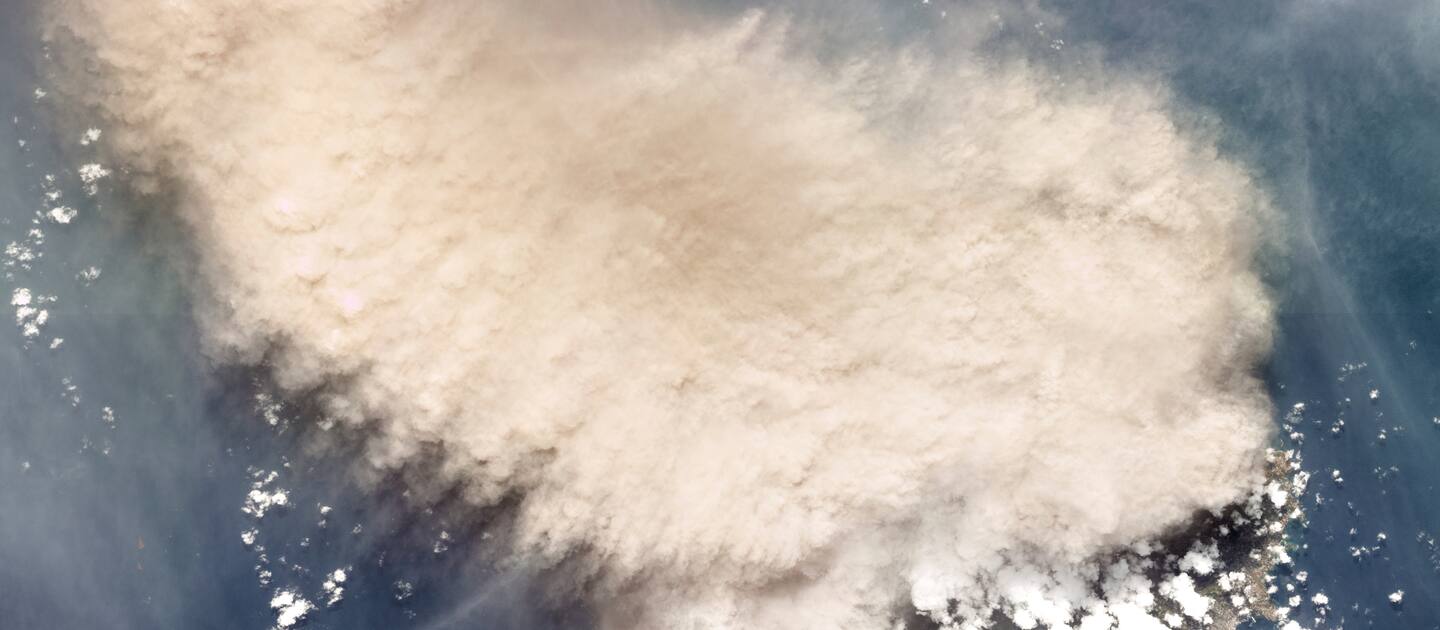Satellites capture dozens of explosive eruptions from La Soufrière volcano on St. Vincent island

The 4,094-foot Caribbean stratovolcano, which previously erupted in 1979, had been acting up since December. A new lava dome appeared before the new year and grew into February, prompting increased supervision by volcanologists who predicted an eruption.
About 16,000 people evacuated from communities close to the volcano Thursday before the first eruption Friday. Since then, dozens of more explosions have followed, generating devastating pyroclastic flows.
“It’s destroying everything in its path,” Erouscilla Joseph, director of the University of the West Indies’s Seismic Research Center, told the Associated Press.
The sputtering volcano has spewed thousands of tons of ashen fine particulate matter miles into the atmosphere, captured by the GOES east weather satellite, which peers down from 22,236 miles above the Earth’s surface.
The satellite captured the first eruption at 8:41 a.m. Friday, the 8:50 a.m. scan revealing a vertically extensive plume of brown volcanic particulates injected high into the atmosphere. The plume cast a lengthy shadow across the northwest stretch of the island, extending into the adjacent Atlantic Ocean.
Estimating the plume height at 9 a.m. using the length of the shadow and the angle of the sun indicates that volcanic material may have reached up to 38,000 feet in height. Satellites estimated that the top of the plume was as cold as minus-75 degrees Fahrenheit, corresponding to altitudes near 40,000 feet.
West-to-northwesterly winds initially fanned ashfall north of Barbados, but Saturday the breeze changed direction. That sent a thick column of ash directly over the island, the day turned into night by the eerie black clouds.
Social media video showed specks of ash and dust precipitating out of the air, coating the ground in some areas and posing a respiratory danger for some. One video from St. Lucy, at the northern tip of Barbados, revealed the presence of barely discernible low-level clouds — suggesting that the greatest concentration of ash and other airborne particulates was between 10,000 and 30,000 feet.
Closer to the eruption site, volcanic lightning flickered within the ash cloud, indicative of extreme turbulence and friction within the rapidly ascending particulate plume. On the ground, images from social media showed areas of St. Vincent’s lush landscape covered in ash.
The Associated Press reported that “damage was extensive in the island’s Northeast region,” based on an account from St. Vincent Deputy Prime Minister Montgomery Daniel. “Forests and farms were wiped out, with coconut, breadfruit, mango and soursop trees destroyed, as well as plantain and banana crops,” the Associated Press wrote.
Sunday morning started with a massive eruption that sent an atmospheric shock wave of sorts rippling out from the blast. Ascending air within the plume rose so rapidly that it recoiled upon hitting the tropopause, or the lower edge of the stratosphere, above which it’s extremely difficult for surface parcels of air to rise. That induced an up and down oscillating motion known as a gravity wave — akin to the ripples produced by a bobber in a pond. Any periods of downward motion put a damper on cloud cover production, allowing one to discern the atmospheric waves radiating outward.
In the past 24 hours, eruptions have been occurring semi-regularly every couple of hours, each producing new plumes that drift off to the east. Satellites indicated that 10 eruptions had occurred since midnight Saturday.
Volcanoes can have a major impact on Earth’s climate, though the eruption of La Soufrière thus far hasn’t reached that scale. Ash prevents incoming sunlight from heating the ground, while sulfuric aerosols lofted into the stratosphere can interact with water molecules and reflect sunlight back out to space.
Earth’s temperature has been known to decrease in the years surrounding major eruptions, such as that of Mount Pinatubo in the Philippines in 1991. The sulfuric acid produced from volcanic aerosols can also speed the destruction of upper-atmospheric ozone.
Jason Samenow contributed to this article.






